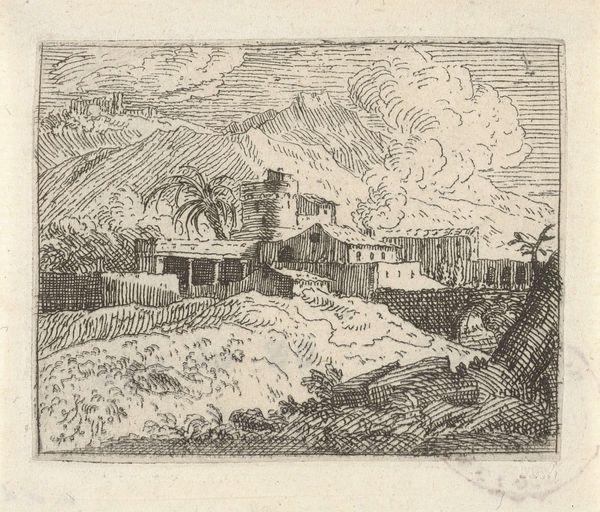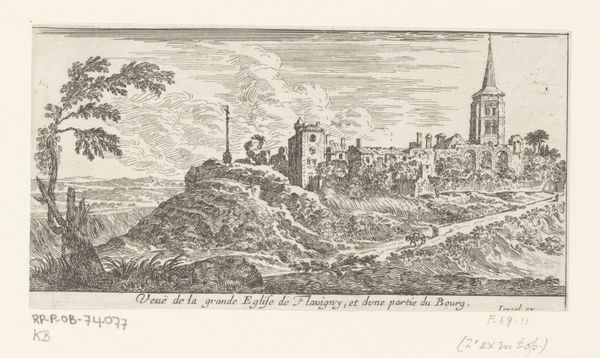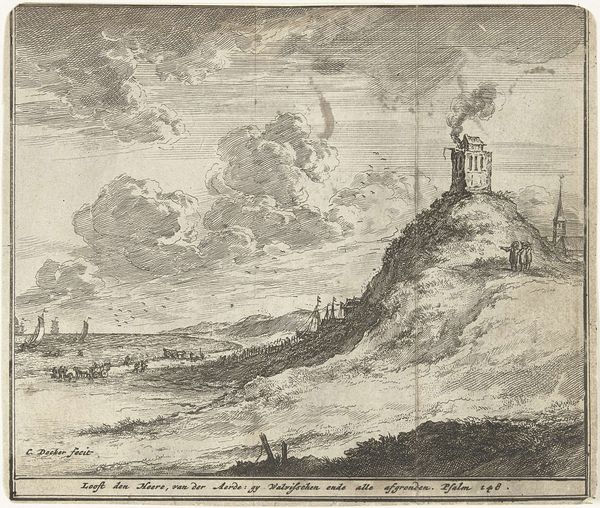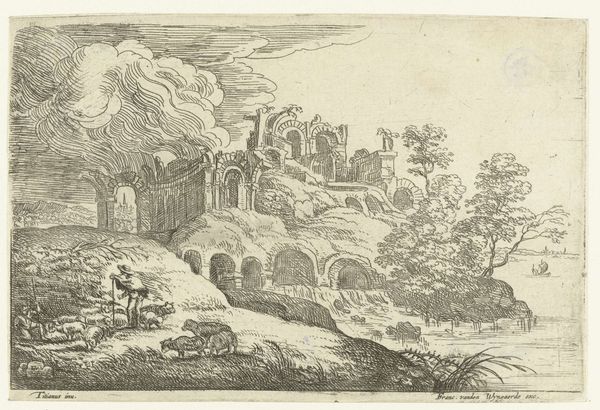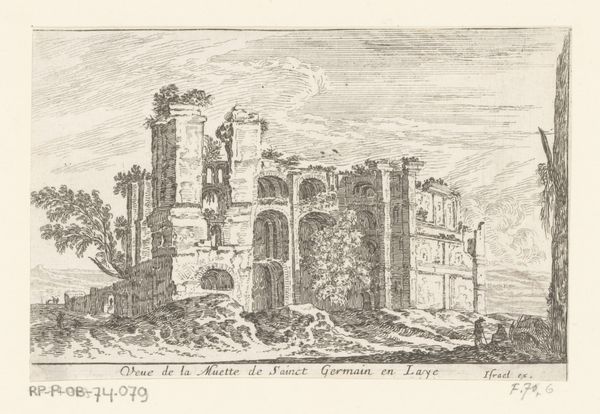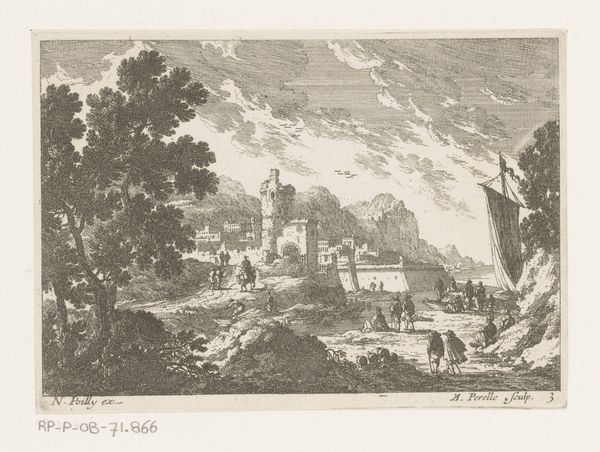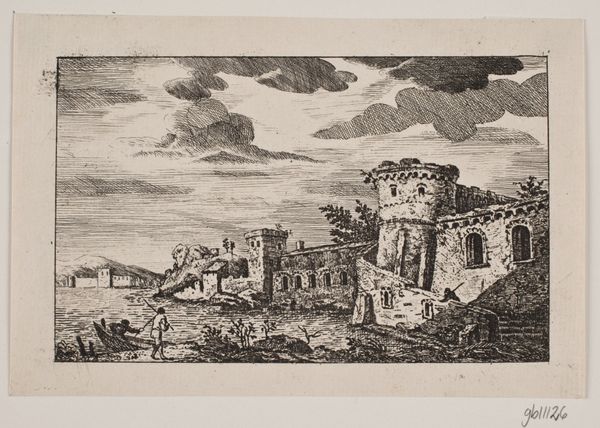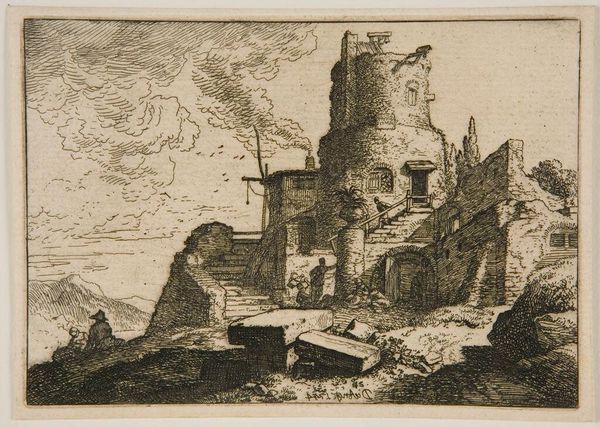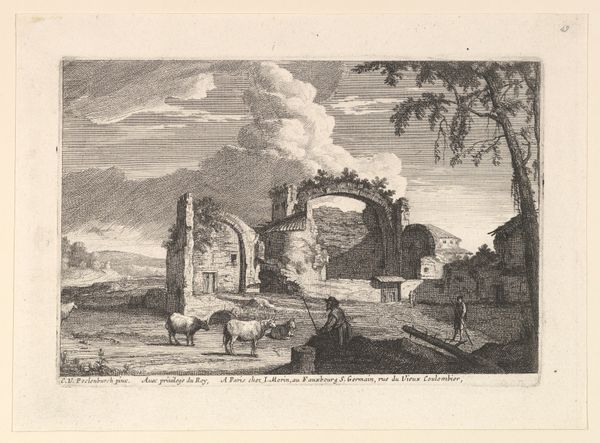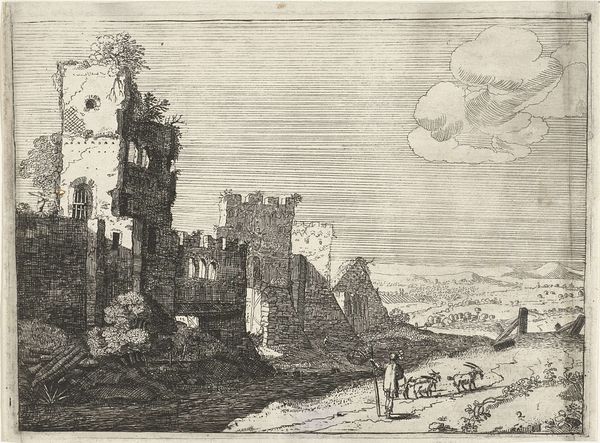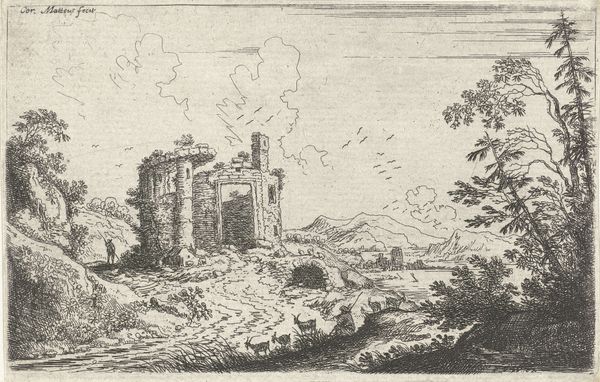
Dimensions: height 52 mm, width 90 mm
Copyright: Rijks Museum: Open Domain
Editor: This etching, "Landscape with a Ruin," by Franz Edmund Weirotter, circa 1766, gives off such a somber feeling. It looks like the remnants of a past civilization overtaken by nature. What do you see in this piece? Curator: This piece resonates deeply within the Romantic movement, where ruins often served as potent symbols of the decline of empires and the fleeting nature of human achievement. But more than that, think about the era in which it was created; Europe was on the cusp of radical political upheaval, which caused artists to think deeply about social structure and how societies gain and lose power. Considering this, what do you see in Weirotter’s choice to depict not grand palaces, but the skeletal remains of something old? Editor: It definitely reinforces the idea that power is temporary. The overgrown vegetation and the crumbling stone make it feel like nature is reclaiming what was once human-made. Do you think Weirotter was making a specific political statement? Curator: Perhaps not specific, but definitely relevant to the anxieties of the time. Remember, the late 18th century saw the rise of revolutionary thought and the questioning of established orders. Representing a dilapidated ruin, therefore, is a powerful commentary on the impermanence of even the most powerful societal structures. In what way does the ‘landscape’ then seem equally, or more, important than the ruins themselves? Editor: Good point! The landscape suggests the continuity of nature despite the rise and fall of human structures. Nature persists, almost indifferently, to what happens within it. I hadn’t quite thought about that. Curator: Precisely. Weirotter's work serves as a reminder of the ever-present tension between humanity’s aspirations for permanence and the inevitability of change and decay. Editor: So, it's a meditation on power, transience, and the indifference of nature? I'll definitely remember that when I look at similar works. Thank you. Curator: Indeed. The etching invites us to contemplate not just what was, but what will be, holding space for critical engagement between art and socio-political change.
Comments
No comments
Be the first to comment and join the conversation on the ultimate creative platform.
